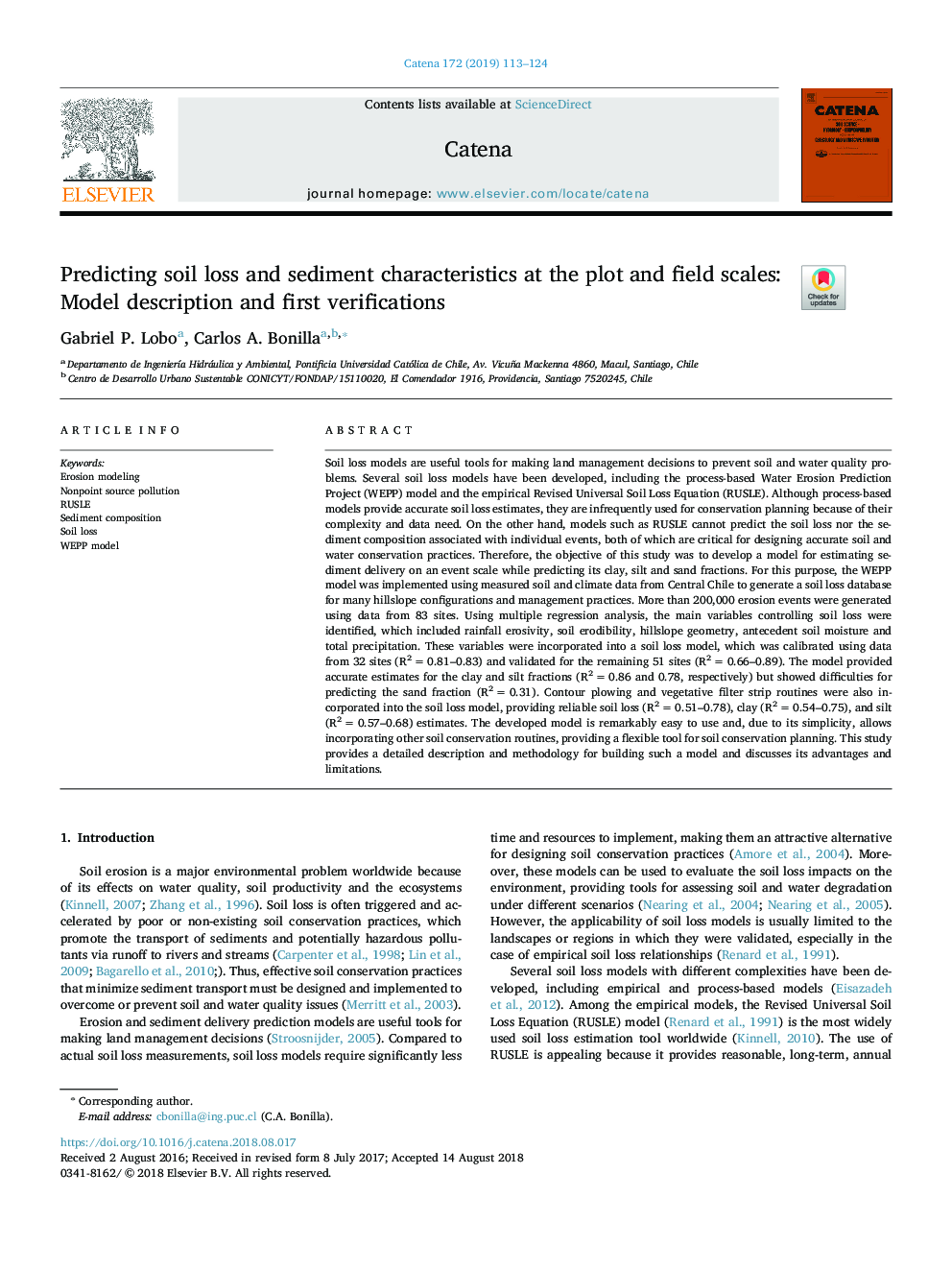| کد مقاله | کد نشریه | سال انتشار | مقاله انگلیسی | نسخه تمام متن |
|---|---|---|---|---|
| 8893324 | 1629182 | 2019 | 12 صفحه PDF | دانلود رایگان |
عنوان انگلیسی مقاله ISI
Predicting soil loss and sediment characteristics at the plot and field scales: Model description and first verifications
ترجمه فارسی عنوان
پیش بینی تخلیه خاک و ویژگی های رسوب در مقیاس قطعه و زمین: شرح مدل و بررسی های اولیه
دانلود مقاله + سفارش ترجمه
دانلود مقاله ISI انگلیسی
رایگان برای ایرانیان
کلمات کلیدی
موضوعات مرتبط
مهندسی و علوم پایه
علوم زمین و سیارات
فرآیندهای سطح زمین
چکیده انگلیسی
Soil loss models are useful tools for making land management decisions to prevent soil and water quality problems. Several soil loss models have been developed, including the process-based Water Erosion Prediction Project (WEPP) model and the empirical Revised Universal Soil Loss Equation (RUSLE). Although process-based models provide accurate soil loss estimates, they are infrequently used for conservation planning because of their complexity and data need. On the other hand, models such as RUSLE cannot predict the soil loss nor the sediment composition associated with individual events, both of which are critical for designing accurate soil and water conservation practices. Therefore, the objective of this study was to develop a model for estimating sediment delivery on an event scale while predicting its clay, silt and sand fractions. For this purpose, the WEPP model was implemented using measured soil and climate data from Central Chile to generate a soil loss database for many hillslope configurations and management practices. More than 200,000 erosion events were generated using data from 83 sites. Using multiple regression analysis, the main variables controlling soil loss were identified, which included rainfall erosivity, soil erodibility, hillslope geometry, antecedent soil moisture and total precipitation. These variables were incorporated into a soil loss model, which was calibrated using data from 32 sites (R2â¯=â¯0.81-0.83) and validated for the remaining 51 sites (R2â¯=â¯0.66-0.89). The model provided accurate estimates for the clay and silt fractions (R2â¯=â¯0.86 and 0.78, respectively) but showed difficulties for predicting the sand fraction (R2â¯=â¯0.31). Contour plowing and vegetative filter strip routines were also incorporated into the soil loss model, providing reliable soil loss (R2â¯=â¯0.51-0.78), clay (R2â¯=â¯0.54-0.75), and silt (R2â¯=â¯0.57-0.68) estimates. The developed model is remarkably easy to use and, due to its simplicity, allows incorporating other soil conservation routines, providing a flexible tool for soil conservation planning. This study provides a detailed description and methodology for building such a model and discusses its advantages and limitations.
ناشر
Database: Elsevier - ScienceDirect (ساینس دایرکت)
Journal: CATENA - Volume 172, January 2019, Pages 113-124
Journal: CATENA - Volume 172, January 2019, Pages 113-124
نویسندگان
Gabriel P. Lobo, Carlos A. Bonilla,
